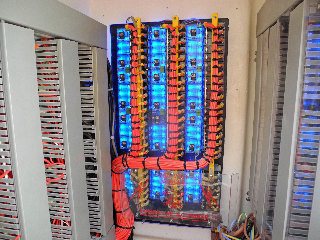
numbered wires_001_6150.jpg
As some of you know one of my favorite jobs over recent years is to act as one of the judges for the Cruising World Magazine Boat of The Year contest. Contrary to what some have accused us of over the years, the Cruising World program and the judges get deep into the weeds as they say. We bring in experts in all areas related to sailing, cruising/living aboard, construction and systems all get covered both on land and on the water.
My role is as the systems guy. I actually take things apart on the boats we inspect, much to the chagrin of some of the sales people who are trying to make their boat yours…..Hey, its part of the program guys!
Anyhow, I often get asked about what some of the things I look for actually are and what influences me one way or the other so today I thought I might share one area that has a big influence in my area of interest.
One of the areas that the ABYC talks about in its electrical standards has to do with identification of the wiring used on boats so that someone attempting to service the electrical system has a clue about what a given wire is being used for. This makes a huge amount of sense when you think about it, and especially in light of the fact that the electrical systems on modern boats are not exactly getting simpler..
Now, the ABYC offers pretty broad latitude on how one might go about identifying low voltage DC conductors. Numbers are allowed, color codes are allowed and some colors are recommended, individual conductor labeling is acceptable.
In the case of conductors that use insulation color as the identifier, we are at the point where I feel this may not be enough to really get the job done. Some builders have certainly realized that and have figured out some great ways to get the job done. This is one of the things I always look for on the boats we inspect. Let me show you some examples. Below you see the back side of the DC panel on one of the boats we inspected this year:

What is immediately noticeable as you look at the photo is that most all of the wires shown use red insulation, which based on ABYC E-11 Standard indicates a DC positive conductor. Great, but that does not tell me anything about what circuit on the boat is being supplied by that red DC positive conductor, and that is my gripe with the way things have evolved in some cases. The builder in this case could have built a completely standards compliant boat using the red wire only, but in my view would have been missing the spirit of the standard which is to help and and enhance safety.
So, what the photo does not show well because of the resolution of the photo is that each and every one of those many red wires you see has a number heat shrinked to it at the terminal and the boat has a number decoder in its owner’s manual. A similar manual is shown here(I don’t think it is the same boat):

So as you can see, the owner’s documentation above gives them the wire number, its gauge size and a nice description of its purpose. You can see that on the boat above, we are talking lots of red and yellow wires(the preferred choice now for the DC negative return conductor). Not a problem folks, I really don’t care what color the builder uses, with the decoder page above, and as long as those numbers are still on the end of the cable, I have more than enough information to get to servicing the aft running light or the port sail locker light.
So, the boat above gets high marks from me in the wiring area based on all of this. A nice neat installation and more than adequate cable identification. Just don’t lose that decoder table!







